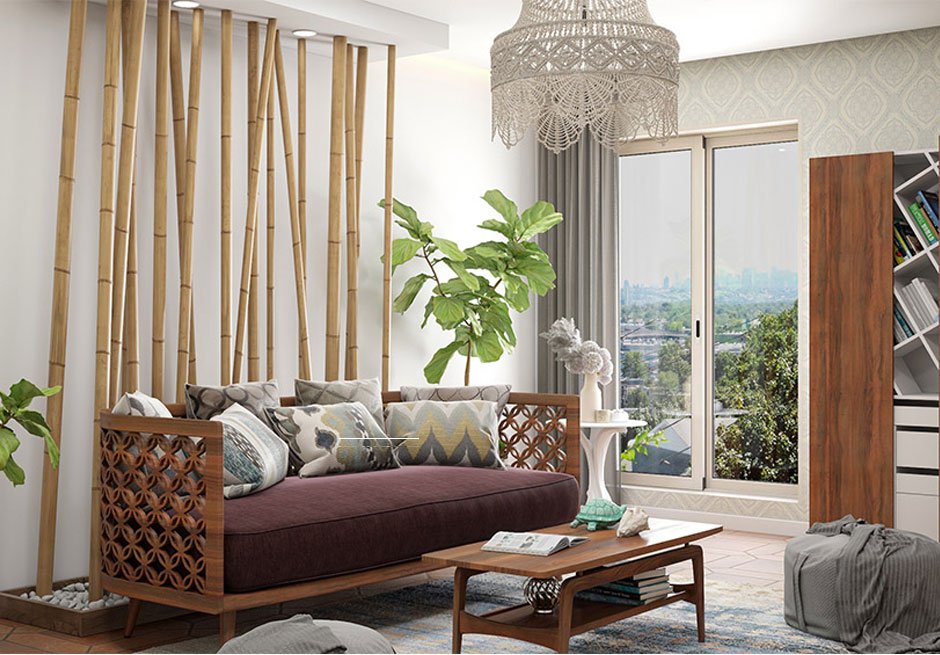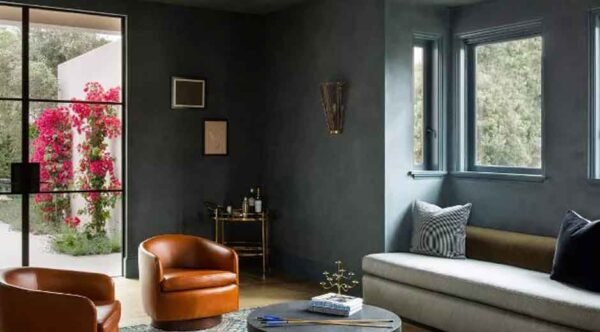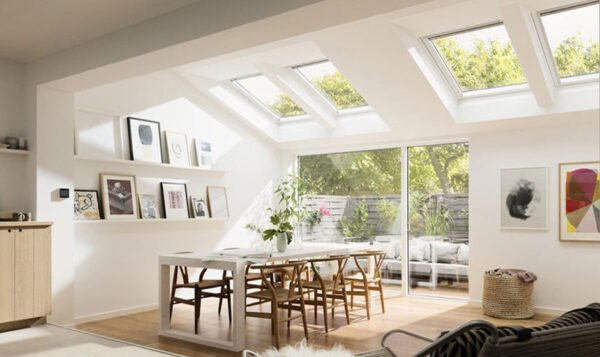Eco-Friendly Living: How to Incorporate Sustainable Design in Your Home

As our planet faces the growing challenges of climate change and environmental degradation, it is everyone’s responsibility to embrace eco-friendly living to try and make a difference! One of the best ways to do this is by adding sustainable design touches to our homes. In this article, we’ll dive into various aspects of sustainable home design and share some handy tips for making your living space a greener, more earth-friendly place. So, let’s get started!
Energy Efficiency and Renewable Resources
Energy efficiency is a crucial aspect of sustainable living, as it not only reduces your carbon footprint but also lowers your energy bills. Consider installing the follow energy-efficient appliances in your home:
- Washing machines
- Dishwashers
- Fridges
- Smart thermostats
- Ceiling fans
These appliances consume less electricity and water, making them more environmentally friendly.
Another key element is incorporating renewable energy sources like solar panels, which generate clean electricity for your home. If you’re considering a major home renovation or even building a new house, consult an architect with experience in sustainable design to help you integrate renewable energy technologies seamlessly into your project. In addition, upgrading your insulation and installing double-glazed windows can significantly reduce heat loss and improve energy efficiency.
Sustainable Materials and Waste Reduction
Aim to use locally sourced and recycled materials wherever possible, such as reclaimed wood or recycled bricks. This reduces the environmental impact associated with transporting materials over long distances and supports local businesses.
Additionally, opt for materials with low embodied energy, such as timber or bamboo, which have a lower carbon footprint than conventional building materials like concrete and steel. Be sure to consult with your architect to identify the most suitable sustainable materials for your project, as they can advise on the best choices based on the local climate and availability.
Waste reduction is another critical aspect of sustainable living. During construction or renovation, ensure that waste is managed responsibly, with recycling and reuse being prioritised. In your daily life, adopt practices such as composting, recycling, and using reusable items to reduce waste.
Water Conservation and Natural Landscaping
Installing water-saving fixtures, such as low-flow taps and showerheads, can significantly reduce water consumption. Additionally, consider rainwater harvesting systems to collect and store water for non-potable uses, like watering plants or flushing toilets.
Incorporating natural landscaping is another excellent way to promote sustainability in your home. Plant native species in your garden to support local biodiversity and opt for drought-tolerant plants that require less water. Furthermore, permeable paving materials can be used for driveways and walkways, allowing rainwater to filter through and replenish groundwater supplies.
Indoor Air Quality and Natural Ventilation
To make your home a healthier place to live, it’s really important to think about good ventilation and using non-toxic materials. Stay away from materials that release volatile organic compounds (VOCs) – these are found in some paints, adhesives, and flooring materials, and they can lead to breathing problems and other health issues.
Natural ventilation can significantly improve indoor air quality, so aim to incorporate design features that promote airflow throughout your home. For example, use windows and vents strategically to create cross-ventilation, which helps regulate temperature and remove pollutants. Consult with your architect to develop a design that maximises natural ventilation and utilises passive cooling and heating techniques, reducing your reliance on energy-intensive air conditioning and heating systems. Many modern homes are built with indoor air quality in mind, which can affect the price. There are many 100k houses available on the market that are well-insulated and designed for this purpose!
Daylighting and Energy-Efficient Lighting
If you want to reduce your energy consumption and improve your well-being, then utilising natural light is a must. A well-designed home should incorporate ample windows, skylights, and other openings to bring in natural light, reducing the need for artificial lighting during daylight hours. Work with your architect to ensure that daylighting is considered from the early stages of the design process, taking into account factors like window placement, glazing types, and shading devices.
Of course, natural light isn’t available 24/7, so when you do need artificial lighting, consider using LED or CFL bulbs as they consume far less energy than traditional incandescent bulbs. Additionally, consider installing dimmer switches and motion sensors to further reduce energy consumption and enhance the ambiance of your living space.
Sustainable Interior Design and Furnishings
Sustainable living extends beyond the architectural design of your home and includes interior design and furnishings as well. Select furniture made from responsibly sourced materials, such as FSC-certified wood or recycled materials, and avoid products with high levels of VOCs or other harmful chemicals. By choosing eco-friendly and ethically produced furnishings, you can help reduce the environmental impact of the furniture industry and support sustainable practices.
During the redecorating process, you may want to consider using natural and eco-friendly textiles, as these are sustainable and biodegradable. The best textiles to use are organic cotton, linen, and hemp. Additionally, consider using environmentally friendly paint and finishes that have low VOC content, ensuring that your interior design choices contribute to a healthier living space.
Smart Home Technology and Energy Management
Embracing smart home technology is a fantastic way to boost sustainability and improve your home’s efficiency. Integrating devices such as intelligent thermostats, adaptive lighting systems, and energy monitoring tools enables you to manage your energy consumption more effectively, ultimately reducing waste.
As you collaborate with your architect, be sure to discuss the possibilities of incorporating smart home technology into your design plans. Merging sustainable design principles with state-of-the-art technology will allow you to create a home that’s not only environmentally friendly, but also remarkably efficient and comfortable to live in.
In Conclusion
Incorporating sustainable design principles into your home requires a holistic approach that considers every aspect of your living environment. You should work with an experienced architect and focus on key areas that we have listed throughout this article. If done right, you can create a home that is both environmentally responsible and tailored to your unique needs and preferences. Do your bit for the environment by embracing eco-friendly living and contributing to a more sustainable future for generations to come.



